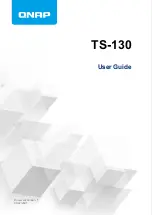
_____________________________________________________________________
724-746-5500 | b lackb o x.co m
Page 137
attached device (the console port of a network router), and to send alerts back to the Nagios server
when an
Administrator
connects to the router or IIS server.
This walkthrough provides an example, but details of the configuration options are described in the next
section. This walkthrough also assumes the network host and serial devices are already physically
connected to the
console server
. The first step is to set up the Nagios features on the
console server
:
Browse the Black Box
console server
and select
System: Nagios
on the
console server
Management Console. Check Nagios service
Enabled.
Enter the
Host Name
and the
Nagios Host Address
(for example, IP address) that the central
Nagios server will use to contact the distributed Black Box
console server
.
Enter the IP address that the distributed Black Box
console server
will use to contact the central
Nagios server in
Nagios Server Address.
Enter the IP address that the clients running SDT Connector will use to connect through the
distributed Black Box servers in
SDT Gateway address.
Check
Prefer NRPE
,
NRPE Enabled,
and
NRPE Command Arguments.
Check
NSCA Enabled
, choose an
NSCA Encryption Method
and enter and confirm an
NSCA
Secret
. Remember these details because you will need them later on. For
NSCA Interval
, enter:
5
Click
Apply
.
Next, you must configure the attached Window network host and specify the services you will be
checking with Nagios (HTTP and HTTPS):
Select
Network Hosts
from the
Serial & Network
menu and click
Add Host
.
Enter the
IP Address/DNS Name
of the network server, for example:
192.168.1.10
and enter a
Description
, for example:
Windows 2003 IIS Server.
Remove all
Permitted Services
. This server will be accessible using Terminal Services, so check
TCP
,
Port
3389
and log
level 1
and click
Add
. Remove and re-add the service to enable logging.
















































